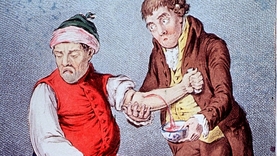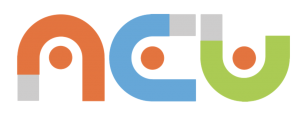
Bloodletting is an ancient practice where doctors would cut people to let blood out of them in the hope that this would lead to some type of cure. We may now laugh at this archaic treatment, but for centuries it was the approach that “modern” doctors thought worked. Imagine having a sore throat and the doctor says, “Don’t worry, I will fix you in no time,” as he reaches for the scalpel or a bowl of leaches! This is exactly what happened to George Washington…yes, THE George Washington, America’s first president. On December 13, 1799 George woke up with a sore throat and was treated with bloodletting where doctors drained an estimated 5-7 pints (3-4 litres) of blood in less that 16 hours. Unsurprisingly he died a few days later!
What does this crazy approach to health care have to do with how you are teaching?
Well, according to Nobel laureate and Stanford professor Carl Wieman, how we teach today is the educational equivalent of this archaic, painful, and useless treatment. In an interview with NPR, Wieman discusses how the approach we are currently using for teaching is not only ineffective, it is detrimental to learning.
“You give people lectures, and [some students] go away and learn the stuff. But it wasn’t that they learned it from lecture — they learned it from homework, from assignments. When we measure how little people learn from an actual lecture, it’s just really small.” (Carl Wieman)
Only 10% remember what is taughtFor years Carl Wieman has been unsatisfied with the traditional “talk-and-chalk” or “sage-on-the-stage” approach, and has experimented with using active learning in his classroom. Prof. Wieman would give a lecture then a few minutes later he would test the students knowledge with a multiple choice test. The result?
Most of the time “only 10 percent would actually remember the answer. A lot of them are asleep, or lost, and I don’t know whether they’re getting anything out of it. If I’m standing up there talking at them, I have no clue what they’re absorbing and not absorbing.”
Active learning – The SolutionSeeing such poor results, Prof. Wieman dumped this ineffective, “bloodletting” and switched to using active learning approaches in his classroom. His students are now often found in small groups actively discussing the course content while he walks around the classroom helping guide their learning.
Now that his students are actively involved in the learning process, as opposed to being passive consumers, not only are they more engaged, but he is better able to see what they understand and what is causing them problems.
“I’m doing my best to understand what’s going on in every one of those students’ minds and challenge them and monitor how they’re learning, If I’m just lecturing the whole time, what a terrible waste that would be. Half the material would be over their head, and half the material would be completely trivial to them.” (Carl Wieman)
Research proven results
| As a scientist and experimentalist, his work as a professor in both Stanford’s physics department and its graduate school of education is driven by data. As such Prof Wieman was determined to measure what impact his teaching approaches are having on his classes. The results, which have been published in several journals and science publications, are astounding. Failure rates have dropped by as much as 12% on courses that involve active learning and test performance increased by 50%. These results are so astounding that Prof Wieman argues that it is “almost unethical to teach undergraduates any other way”. |

”I know you can double how much a student learns depending on what method the instructor is using.” (Carl Wieman)
Why is everyone not using Active Learning?With such compelling evidence, it seems strange that everyone is not using active learning techniques in their classrooms. Why is this?
Well, beyond the obvious, that some teachers might not want to change – because change is uncomfortable and invariably requires effort, there is another important reason. Dan Schwartz, who is the dean of Stanford’s Graduate School of Education puts the problem of poor adoption of this effective approach down to a “mountain of goo”.
“The literature on how to do this stuff is a giant mountain of goo…I can tell people they need to teach better. But if I don’t give them things that are easy for them to implement, they won’t do it.” (Dan Schwartz)
From Goo to GoodThere is no doubt that the research points to the fact that as teachers we should be using active learning approaches in our classrooms. Add to this the exciting opportunities that technology brings, and we should be seeing huge innovations in how we teach. The era of bloodletting is far behind us, yet somehow while medicine has advanced it seems in many ways teaching has not. However, without an “easy way…to implement” this as Dan Schwartz points out, moving from our old approach to a new more effective approach is going to be difficult for all but the very brave.
The Activated Classroom Teaching (ACT) approach is an “easy way…to implement” active learning approaches with technology in the classroom. This research-backed approach focuses on pedagogy before technology and guides teachers in how to effectively use technology in the classroom in a new and innovative ways. Rather than simply tell teachers that active learning is powerful, or tell teachers that we should be using technology in new ways, the ACT approach SHOWS teachers how they can do this.
Based on 5 layers of increasing activity the ACT model is a digital pedagogy for the modern age that is transforming how schools are teaching around the world. To find out more about this amazing approach watch the video below or read more here.




